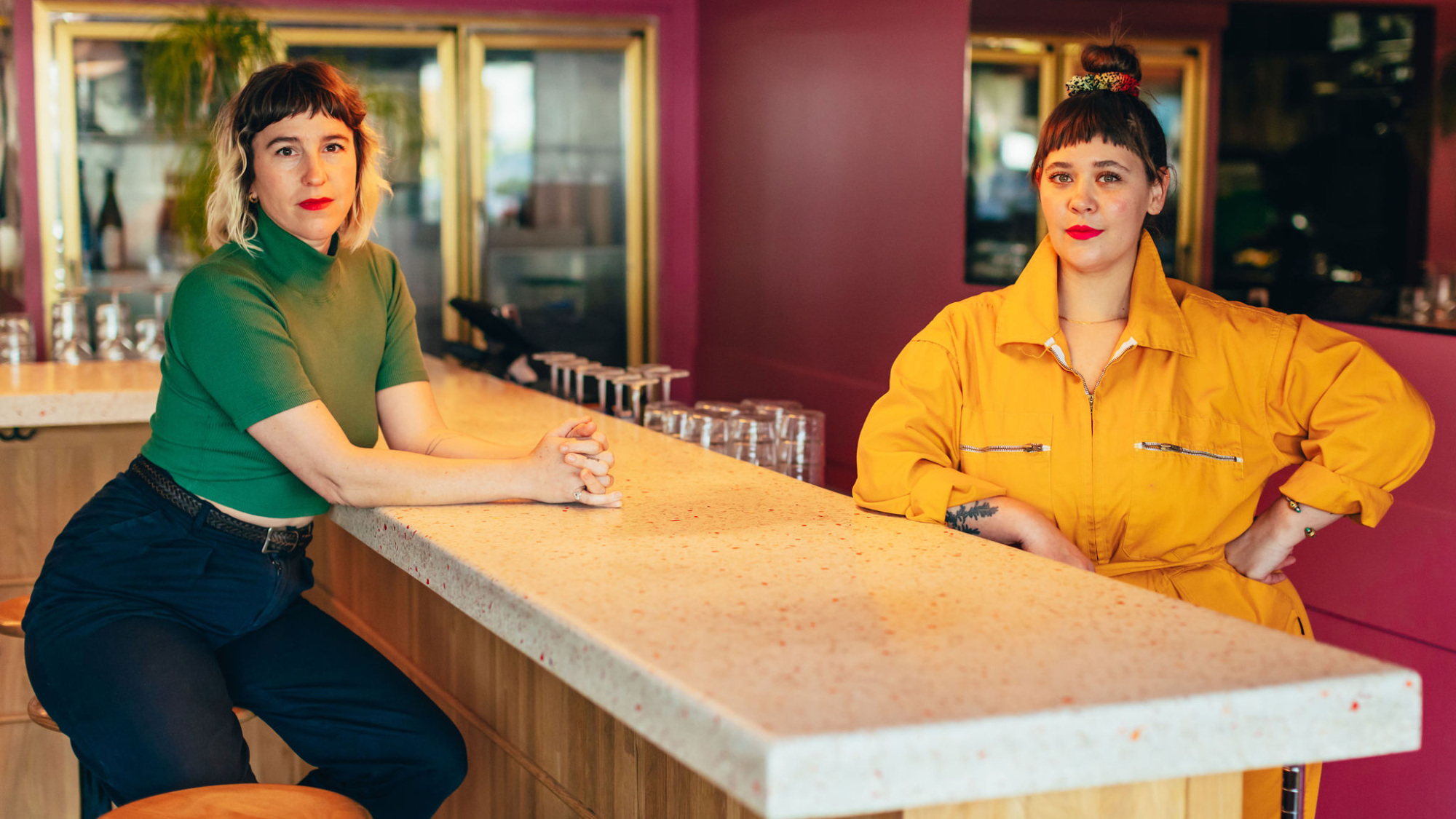
The Ruby Fruit is Revitalizing America’s Lesbian Bar Scene
When Mara Herbkersman and Emily Bielagus decided to open a lesbian wine bar and restaurant in Silver Lake, many told them it couldn’t be done. Then again, that’s often the reaction forward-thinkers like Herbkersman and Bielagus receive when they let people in on their Big Ideas. But the two restaurant industry vets didn’t let the skeptics — or the fact that L.A. had zero existing lesbian bars — stop them. They pushed ahead and created the Ruby Fruit in the former Eszett space, where the two initially met as coworkers.
The need for explicitly sapphic spaces like the Ruby Fruit is palpable. According to the Lesbian Bar Project, there are a scant two dozen dedicated lesbian bars in the country, down from several hundred 30 years ago. At the Ruby Fruit, there are now lines out the door pretty much every night, and crowds spill into the strip mall parking lot while waiting for a spot at one of the communal tables.
On a recent evening, “Closer to Fine” was ringing out over the speakers while fashionable guests chatted, drank vermouth spritzes and natural wine, and snacked on fried gigante beans and codfish croquettes, all beneath vibrant pink walls and paintings of nude women in recline. Of the bar’s seemingly instant popularity, Bielagus says, “Maybe the more specific you are with your vision, the more successful it will be. Generalizations don’t spark people’s passions, but when you speak to someone’s specific way of identifying in the world, and you say, ‘Here, this is actually for you,’ that really resonates.”
We sat down with Herbkersman and Bielagus to discuss the best time to arrive at the Ruby Fruit if you want a table, upcoming events that you should RSVP for via Resy, and why the hell it took so long to get a lesbian bar in Los Angeles.
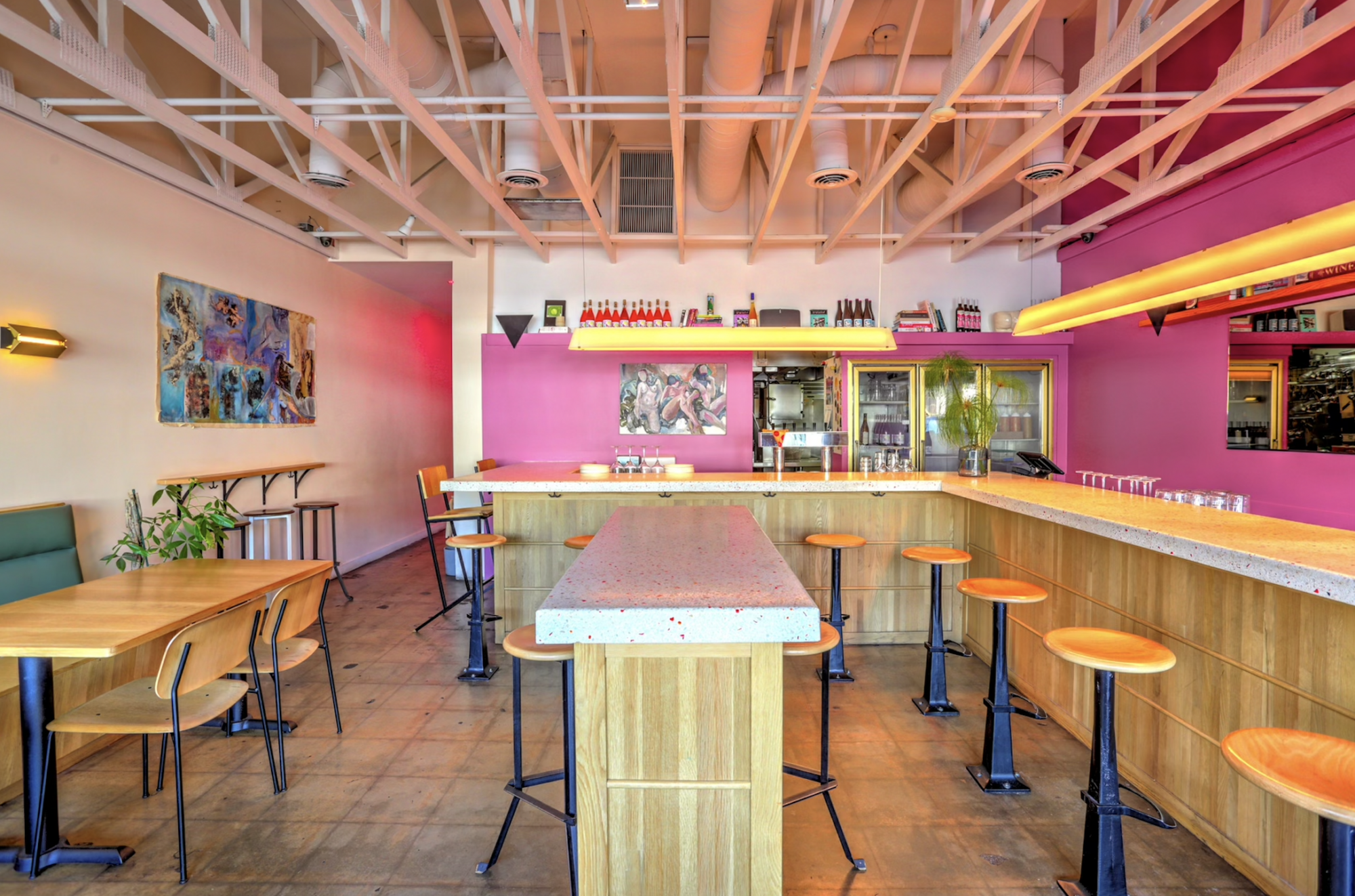

Resy: This is the first lesbian bar in L.A. in more than half a decade. Lesbian bars around the country are dwindling. Why do you think that is?
Bielagus: I think a part of it does have to do with expected roles for women in general. Like, women don’t make as much money as men and they’re not expected to have the same kind of thriving social life as gay men for some reason. Although, I think our bar is proving that wrong. I also think people don’t believe lesbian bars will survive, just because there’s this narrative that they don’t. It’s like a self-fulfilling prophecy.
Herbkersman: Lesbian visibility is constantly an issue. And then, in general, women who get married and have kids are often the ones who stay at home, right? So nightlife for women tends to die out at a certain point. But the world is changing, as are expectations of how people exist, and how and when they have children and what that looks like.
When we created The Ruby Fruit, there were a lot of naysayers. So many people said, “this can’t be done” and “there’s a reason bars like this close.” And like Emily said, we’re proving them wrong right now. We’re still fresh and really new, but it’s abundantly clear that this is needed and wanted, and also sustainable.
We’re still fresh and really new, but it’s abundantly clear that this is needed and wanted, and also sustainable.— Mara Herbkersman, The Ruby Fruit
Resy: You describe The Ruby Fruit as a specifically and explicitly sapphic space. What does a lesbian bar mean to you?
Bielagus: As members of the queer community, language is very important to us and we try to be careful with it. The language that people use can be weaponized against us. The language that we use to describe ourselves, on the other hand, can be very empowering. I do think the word “lesbian” has gotten sort of a bad reputation over the last few years because I think it implies a sort of bio-essentialism and gender specificity. And I don’t think that that has to be true. I think that lesbianism is more gender expansive than just, like, two cis women in a relationship.
But we do use the word “sapphic” more than we use the word lesbian, and we use them sort of interchangeably. Sapphic, I think, calls to the community of lesbianism, like AFABs, trans folks, and non-binary people, and people who would call themselves lesbians if lesbians hadn’t sort of become a dirty word. I think what Mara and I are doing is helping people reclaim the word lesbian, and that it doesn’t have to be synonymous with terfs and bio-essentialists.
At the same time, there is something powerful in specificity. The reason why we didn’t want to necessarily be just a “queer” space is there was not, as you mentioned, a specifically lesbian or sapphic space in Los Angeles for a long time. And when you walk into the Ruby Fruit, it’s just filled to the brim with people who self-identify as lesbians, and people who love lesbians and are surrounded by them. We’re seeing the power of specificity.

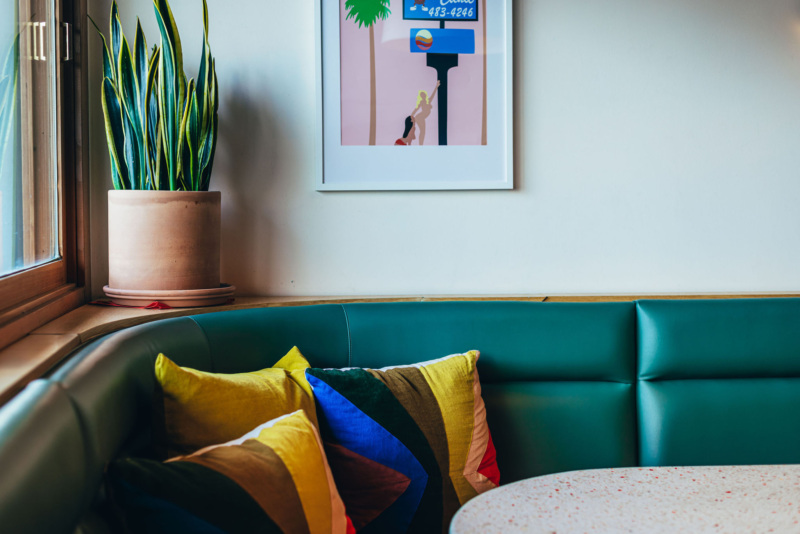
Resy: The restaurant that was formerly in The Ruby Fruit space, Eszett, decided to call it quits. What have you changed to make the space work?
Herbkersman: We have to pack the room. We have stools now, instead of chairs with backs, so we can pull four or five stools up to a little two-top table and people can squish around. It’s very much standing room and mingly. The food is really fun and not too serious, and you can eat with your hands. You can pop in for a snack or you can stay for a full dinner.
The Rubyfruit Jungle is a book by Rita Mae Brown written in the ’70s. It’s a very explicit tale of lesbianism, and moving about and finding your place in the world. Kind of a lesbian anthem, if you will.— Mara Herbkersman, The Ruby Fruit
Resy: What time should people show up to make sure they get a seat?
Herbkersman: If you really feel strongly about sitting at a table, come right at 5 p.m. On Fridays and Saturdays, we have like 50 to 60 people waiting outside starting at 4:30 p.m. It’s wild. We took away reservations at night, but we’ll offer reservations when we open for lunch (April 11).
Resy: What’s the story behind the name?
Herbkersman: “The Rubyfruit Jungle” is a book by Rita Mae Brown written in the ’70s. It’s a very explicit tale of lesbianism, and moving about and finding your place in the world. Kind of a lesbian anthem, if you will. The Ruby Fruit came up [as a name idea], and we were like, maybe that’s a little too on the nose. But, if you know you know, and it just started to be the absolute right choice. It’s so specific and it’s also sexy, fun, and evokes a lot of emotion for a lot of people.
Bielagus: And you know what’s so fun? So many people I’ve been talking to recently are reading the book because of the restaurant name. I’m just like, hell yeah, I want to boost sales for this book.
Resy: Tell me about how you developed the food menu.
Herbkersman: We’ve curated a menu that’s joyful, satisfying, and totally low pressure in a really fun way. Lots of snacks that go well with wine. We retained the Mibrasa charcoal oven that Eszett was utilizing, and everything coming out of there is touched with this really beautiful char. Even something really simple like bread and butter is elevated because of the Mibrasa.
At lunch, we’re going to turn [the menu] up a notch just ever so slightly. There’s a lack of really dope lunch spots in Silver Lake, especially for a sit-down lunch. So we have this opportunity to dial it in a bit more and get a little more serious, in terms of plated and composed dishes.
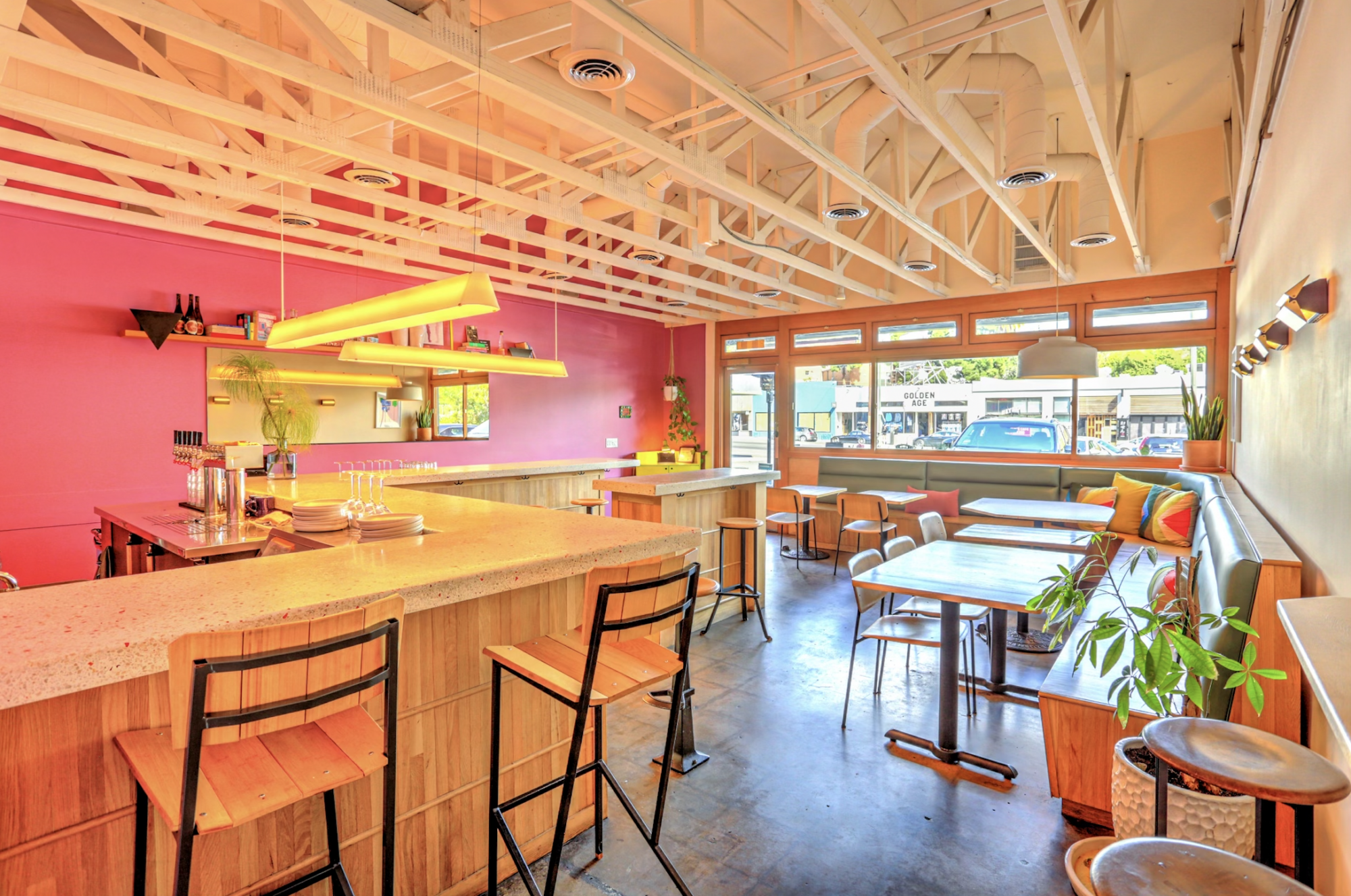
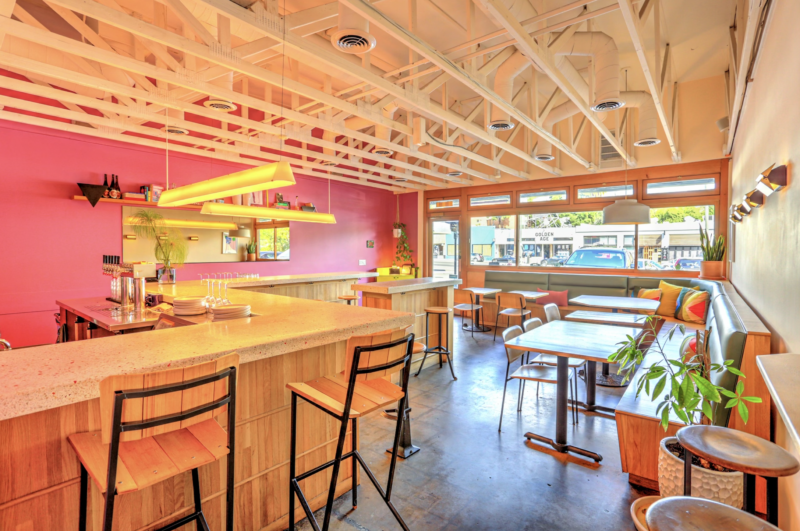
Resy: What’s a dish that you’re really loving right now?
Herbkersman: The beef hot dog with remoulade, ketchup, mustard, and crispy fried shallots is the classic one, and it’s so incredibly satisfying. It’s Danish style, which is inspired by my travels in Scandinavia. It’s everything that you want, especially after a few too many glasses of wine.
I also really love are the coddies. They’re like salt cod croquettes. I’m from Baltimore, Maryland, which has a really beautiful food history, and coddies are a classic Baltimore dish. They’re dusted with a bit of Old Bay, and we do a squeeze of lemon. Another perfect little bar snack to have while you’re drinking.
Bielagus: Another great thing to pop in your mouth when you’re drinking are the fried gigante beans, which have a bit of rosemary and some salt. Holy shit, it’s such a good snack. That’s a dish by our incredibly talented sous chef Jules.
Resy: Talk to me about the wine menu, and what wines you’re really excited about at the moment.
Herbkersman: We’re all natural wines. We have two wines on tap from Solminer, out of Los Olivos. We did a little vineyard visit there last year as part of an Eszett restaurant trip. It’s always nice to serve wine when you’ve actually been to the place that it’s made. When I taste it, it brings me back to when we were on the vineyard looking at their sheep and holding a baby lamb that had been born a few weeks before.
We have their orange, Sunhoney, on tap. It’s a Gruner, Riesling, and Viognier blend. It’s earthy with a little bit of beeswax and honey. It’s really bright, refreshing, and delicious. And then we have their red on tap that’s a Syrah-Grenache blend.
Resy: Are there other beverages apart from wine?
Herbkersman: We have a really nice selection of beers. Highland Park Brewery is one of our favorite breweries to work with. Then we have a full menu of non-alcoholic drinks. We make an elderflower spritz with this beautiful elderflower syrup from Nikolaihof in Austria, which is thought to be one of the oldest wineries in Europe. We also make a non-alcoholic aperitif in house. It’s a recipe that I came up with a couple of years ago. We served it at Eszett, and we are continuing to serve it at The Ruby Fruit. It’s bitter and herbaceous, and definitely evokes the feeling of a cocktail, but it’s totally non-alcoholic.
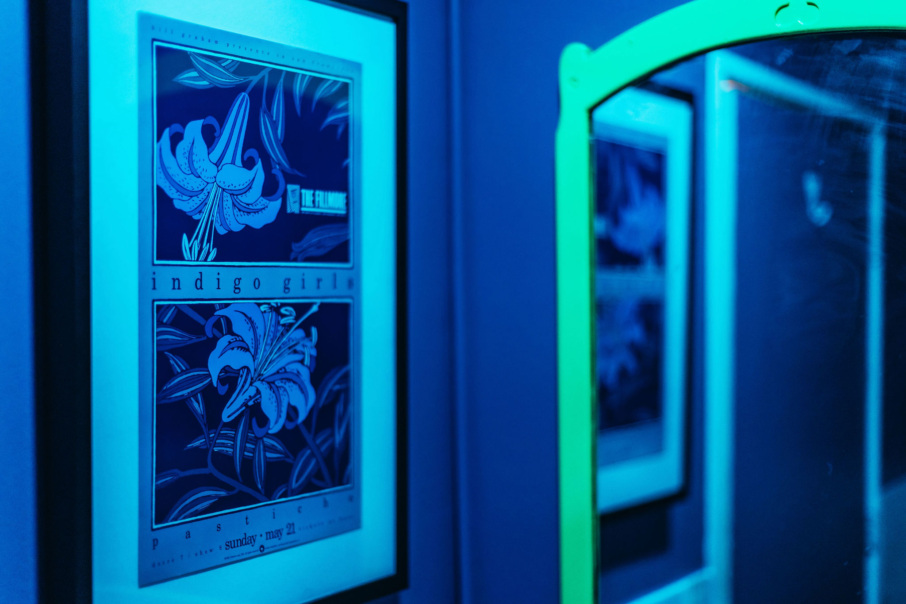
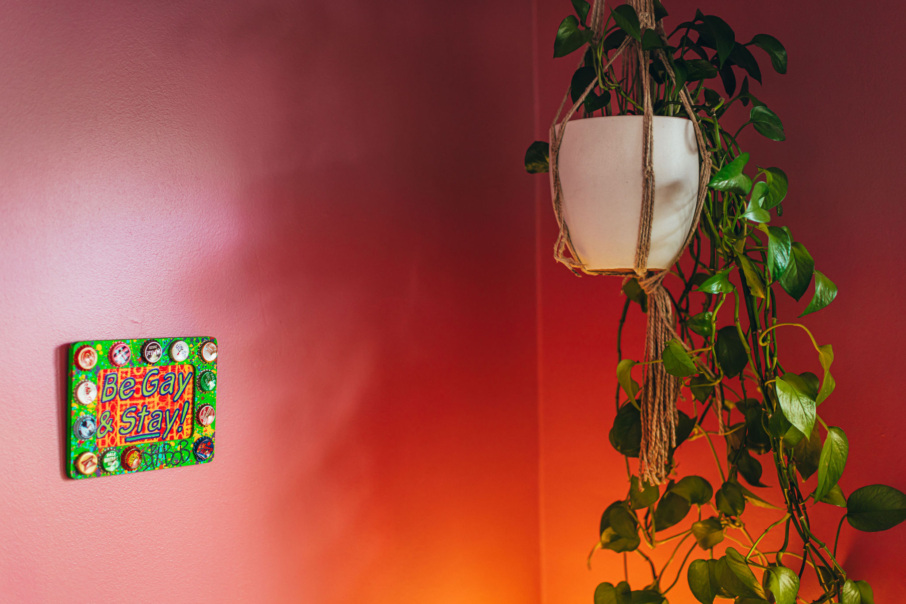
Resy: Are you going to have themed nights and special events at The Ruby Fruit?
Herbkersman: Tonight we’re having a Champagne and caviar party with Roni Ginach of Roni Selects. This is the first event, which is really exciting. And there’s more to come. We have someone hosting a book club that will be monthly or quarterly. The first one is going to be in April and we have a couple of other wine-related events on the books right now.
Resy: And how do people find out about these events and RSVP?
Herbkersman: Instagram will always be the way, and we will utilize Resy’s event platform for ticketed events. Things like the book club will be on Resy.
Resy: Are there other lesbian bars that you feel deeply connected to and want to channel the spirit of?
Bielagus: I lived in New York for 15 years, and there are two lesbian bars there that I really love. They’ve both been there for probably 30 years or more. One is Cubby Hole and the other is Ginger’s Bar. Whether you’re there for Pride or on a random Monday, they’re always packed. It doesn’t matter when you go. Both of them are in the kitschy dive bar genre, and we are definitely going for a different vibe. But what gave me peace of mind, and what made me know in my heart that we weren’t really taking that big of a risk, was just knowing how elbow-to-elbow, comfy, squishy, and packed those spaces are.
What’s really beautiful to watch at The Ruby Fruit is when people are at one table, and then two people walk up to them and are like, “can we sit at the end of this table?” And then I watch as they end up having a meal together and spending the whole night together and making new friends. That actually happens all the time, and it’s so beautiful. That’s an homage to those spaces that I loved in New York.
Herbkersman: You’ll definitely find some new friends when you go to The Ruby Fruit — there’s almost no choice but to talk to people. It’s so tiny, you have to make friends.
Erin Mosbaugh is a food and travel writer who has worked in kitchens in New York and L.A. and co-created the James Beard Award-winning food site First We Feast. Follow her on Instagram and TikTok; follow Resy, too.
















